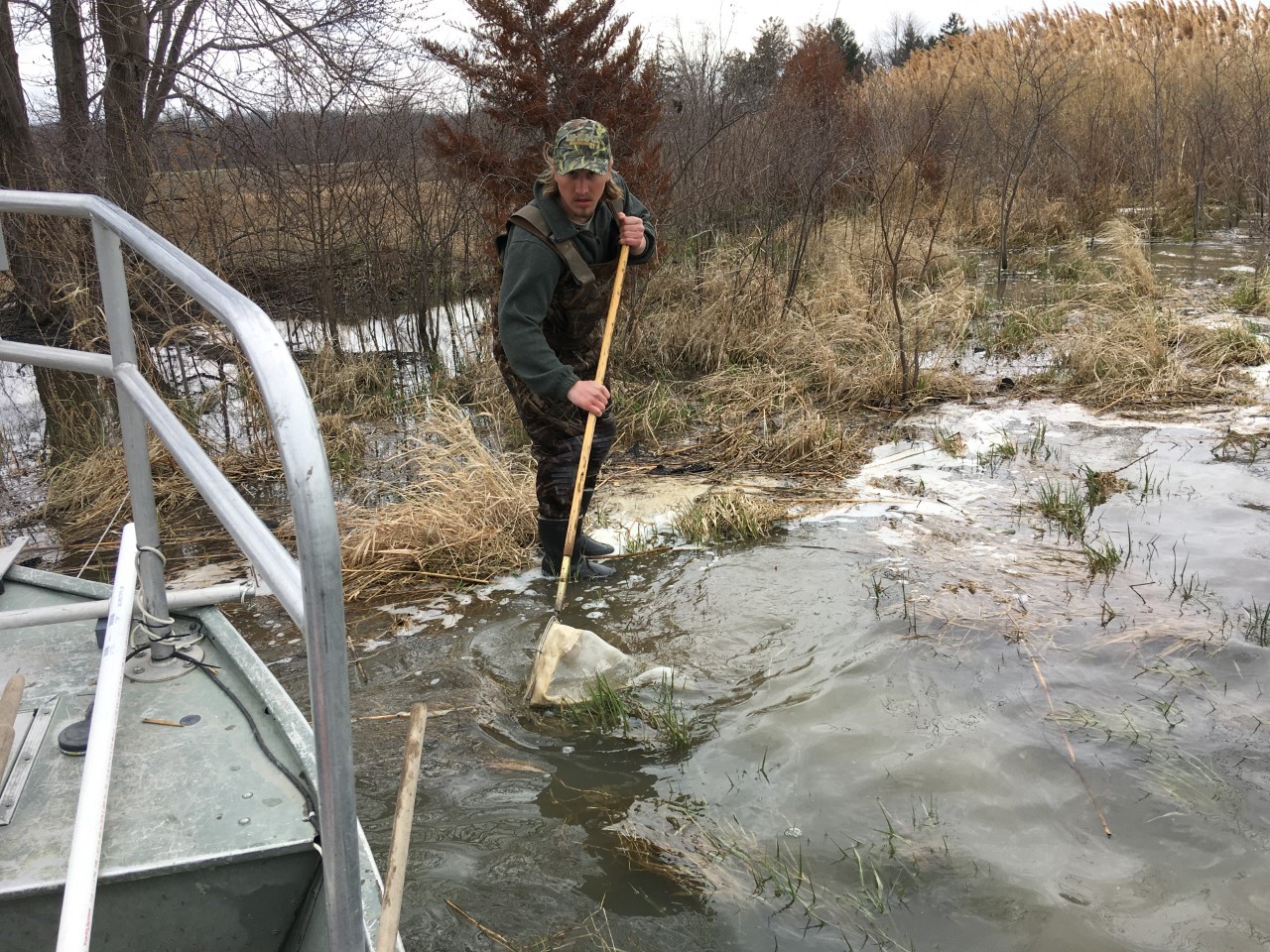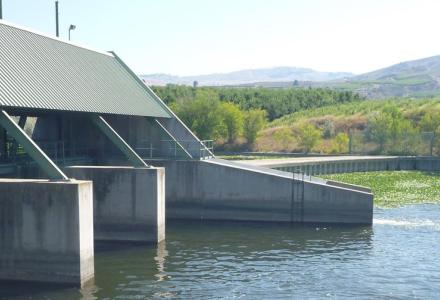
Northern pike are among the top predators in the Great Lakes and a prized sport fish. They are even known to happily eat invasive common carp, potentially providing an ecological control in great enough numbers. But in recent years, the species has had problems successfully reproducing in western Lake Erie. An ongoing study suggests wild winds and waves could be having an effect.
Northern pike spawn in early spring in shallow wetland areas, as soon as the ice moves out during the spring thaw. The fish like to use these spaces as spawning and nursery grounds because the water is warm and their young can grow there rapidly.
While northern pike are heavily studied in general, not much was known about them in western Lake Erie prior to an age distribution survey started in 2017 by Nathan Stott, a Ph.D student at Bowling Green State University in Ohio.
In a talk at this year’s International Association for Great Lakes Research (IAGLR) virtual conference in June, Stott said 106 adult pike were caught in 2017, but after investigating their ages, most had hatched in 2012 or 2016. This led him to research what may be happening year-to-year that has affected spawning success in the region.
Bowling Green researchers have returned to the field every year since 2017, using traps and nets to catch juvenile pike in the same four to six wetlands (depending on the year). In 2017 and 2018, only two juvenile pike were caught, one in each year; however, 22 were caught in 2019, with fewer trapping attempts and less sampling overall.
What changed?
Stott says it appears that heavy winds from the west may be playing a role. These winds can result in seiches, causing the water in Lake Erie to be pushed to the east and reducing water levels in nearshore wetlands of the west end of the lake by up to 1 meter (3.2 feet).
When these seiches happen at the wrong time of the year, they can leave pike eggs high and dry long enough to kill them.
“One of the days I went out to a sample site in a coastal wetland, we had 50 mile-per-hour winds out of the west and my sample site was nothing but a mud flat for a mile,” Stott said.

Seiches occur practically every year, but they impact northern pike when they coincide with the eggs’ gestation period in the spring.
Based on the ages of fish caught and tracked in Lake Erie, Stott said there seems to be a correlation between low numbers of pike hatched in the same years that unfortunately timed seiches take place. The sampled spawning grounds had major seiche events during the spawning-and-gestation season in both 2017 and 2018 that significantly dropped water levels temporarily. In contrast, 2019 had no seiches and corresponding water level drops in that timeframe.
Since water levels in Lake Erie have been unusually high this year and northern pike are able to spawn in newly available shallow habitats like grassy meadows, Stott hopes to go into the field again in 2021 for additional data.
This will include following 44 northern pike that have been acoustically tagged since the research began in 2017 to see where they’re spawning and then sample for eggs. The next step after that would be to look at the historical record of seiches in the same areas where pike spawn to see how prevalent they are. At that point, Stott can work on a computer model that will calculate the dewatering risk to a pike egg based on depth and the overall frequency of seiches during spawning season.
The research into dewatering events for northern pike may help inform water management and restoration decisions along the Lake Erie shoreline, Stott said. Wetland managers who can control local water levels can incorporate this information about seiches and northern pike spawning behavior to maximize the benefits of their wetlands, he said. Funding from the US Great Lakes Restoration Initiative also has also used to promote wetland development and reconnection along Lake Erie’s southern shoreline, and this work also can help with decision-making there, Stott said.


Kevin Bunch is a writer-communications specialist at the IJC’s US Section office in Washington, D.C.



